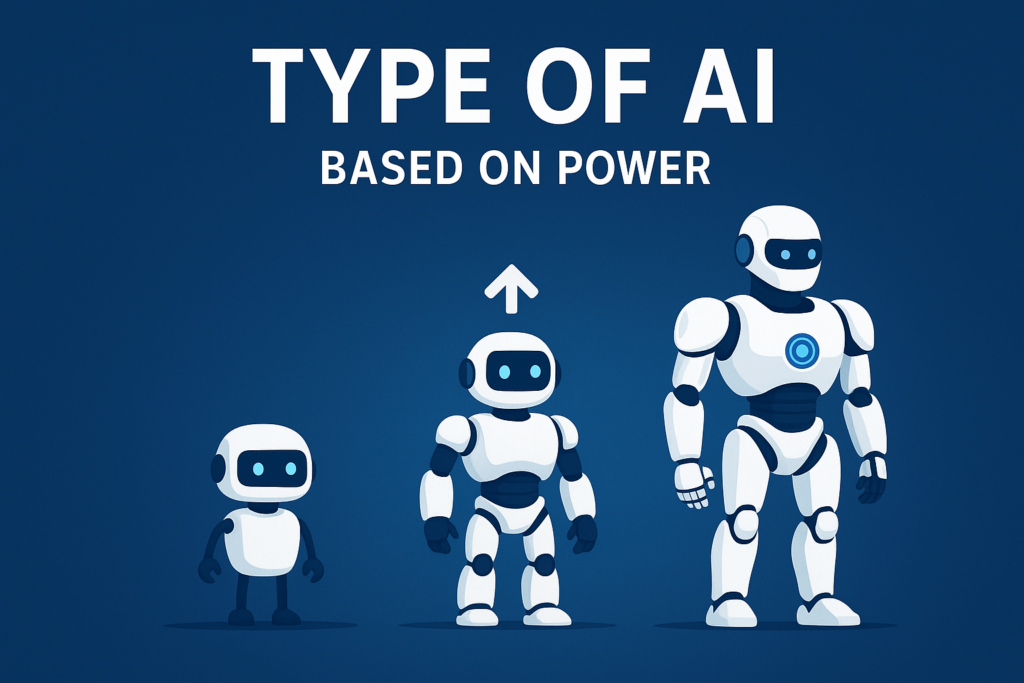
Artificial Intelligence is transforming industries, and understanding the various types of AI is essential for anyone entering the field of performance testing and engineering. Whether you’re tuning a JMeter script or optimizing a machine learning model, knowing how AI behaves and evolves helps you test smarter and build better systems.
Let’s explore this fascinating topic in a way that’s simple, relatable, and connected to your journey as an AI learner.
Understanding the Types of Artificial Intelligence
Artificial Intelligence (AI) is not a single entity—it comes in various forms, each with its own distinct capabilities and limitations. These types are usually categorized based on how intelligent and autonomous the system is.
There are three main types of AI:
- Artificial Narrow Intelligence (ANI)
- Artificial General Intelligence (AGI)
- Artificial Super Intelligence (ASI)
Let’s break each one down with examples and connect them to performance testing.
1. Artificial Narrow Intelligence (ANI)
This is the most common type of AI today. ANI is designed to perform a specific task. It cannot think or make decisions outside its programmed scope.
Examples:
- A chatbot that answers customer queries.
- A recommendation engine on Netflix.
- A self-driving car’s lane detection system.
In Performance Testing: Imagine you’re testing a chatbot’s response time under heavy load. The AI behind it is narrow—it only knows how to respond to specific questions. Your job is to ensure it performs well even when thousands of users interact with it simultaneously.
Daily Analogy: Think of ANI like a calculator. It’s brilliant at math, but can’t write a poem or cook dinner. It does one thing—and does it well.
2. Artificial General Intelligence (AGI)
AGI refers to AI that can understand, learn, and apply knowledge across a wide range of tasks—just like a human.
Examples (hypothetical for now):
- An AI that can write code, paint, solve math problems, and hold a philosophical conversation—all without being retrained.
In Performance Testing: Testing AGI would be complex. You’d need to simulate diverse scenarios and measure how well the system adapts. For example, you might test how quickly it switches from solving a math problem to interpreting a user’s emotional tone in a conversation.
Daily Analogy: AGI is like a student who can study multiple subjects and excel in all of them. It’s flexible, curious, and adaptable.
3. Artificial Super Intelligence (ASI)
ASI is a theoretical concept where AI surpasses human intelligence in every aspect—creativity, decision-making, emotional intelligence, and more.
Examples: None exist yet, but it’s a popular topic in science fiction and future AI research.
In Performance Testing: If ASI ever becomes real, performance testing would shift dramatically. You’d be testing systems that can redesign themselves, optimize their own performance, and even predict future bottlenecks before they occur.
Daily Analogy: ASI would be like a genius who not only solves problems but invents entirely new ways to think about them.
Connecting AI Types to Performance Testing
Performance testing ensures that systems behave reliably under stress, scale, and complexity. Each type of AI presents unique challenges:
- ANI: Focus on speed, accuracy, and scalability for specific tasks.
- AGI: Test adaptability, multi-tasking, and learning efficiency.
- ASI: (Future) Test self-optimization, ethical boundaries, and predictive capabilities.
Let’s take a simple example from the PerfMatrix article on vector addition. In AI systems, vectors represent directions, decisions, or data points. When testing performance, you might simulate how multiple vectors (like user inputs, sensor data, and environmental factors) combine to influence AI behavior. Understanding vector addition helps you visualize how AI systems process and respond to complex inputs.
Conclusion:
- Artificial Intelligence comes in three types: ANI, AGI, and ASI.
- Each type has different capabilities and testing needs.
- Performance testing helps ensure AI systems behave reliably, even under pressure.
Try This Activity: Draw three columns labeled ANI, AGI, and ASI. Under each, list one real-world example, one performance testing challenge, and one analogy from your daily life. This will help you internalize the differences and think critically about how AI evolves.